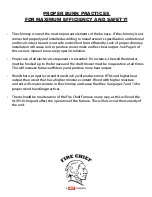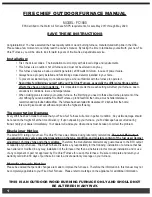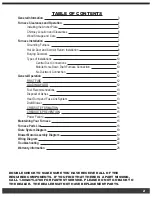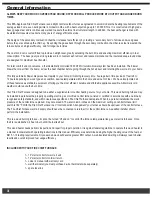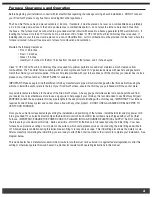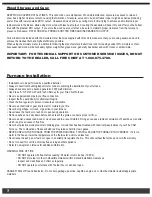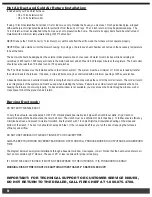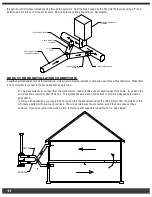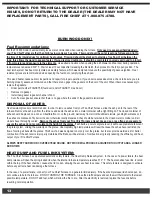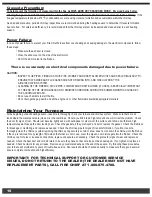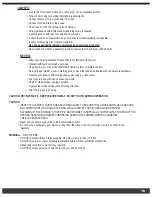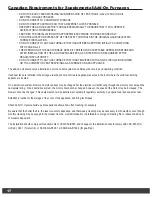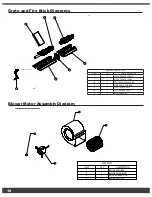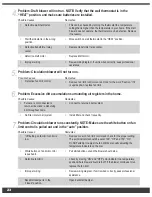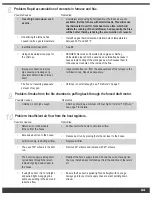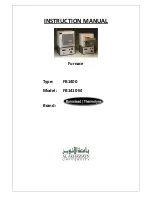
10
TYPES OF INSTALLATIONS:
Your Fire Chief Furnace is designed to be a supplemental or central heating source for your home. This wood burning furnace may
be installed in parallel with a properly operating electric, gas, or oil-fired central furnace that is listed or certified in accordance with
a nationally recognized safety standard within installation clearances as specified on the Fire Chief Furnace nameplate. When in a
parallel installation the static pressure of the central furnace plenum may not exceed .15 water column inches, and the maximum setting
on central furnace limit switch is 182° F. With the FC1900 wood burning furnace in an “Interconnection Arrangement” your Fire Chief
Furnace should be upstream from the central furnace. The Fire Chief Furnace warm air supply should never be connected to the return
air for the central furnace. A QUALIFIED INSTALLER SHOULD PERFORM INSTALLATION.
Smoke detectors and carbon monoxide monitors should be installed on all levels of your home.
CENTRAL DUCT CONNECTIONS:
A qualified professional should do the installation. Maximum run should be 25 feet. A duct run in excess of 25 feet will greatly restrict
the air flow and heat output, therefore is not recommended. When connecting the Fire Chief Furnace to a central duct system, avoid 90°
elbows. As with any furnace, the more turns and branches in the ducting limit the airflow delivery. DO NOT USE FLEX DUCT OUTSIDE.
Run 10 inch insulated galvanized hot air duct from the outside furnace through a window or wall of the house. Once inside, you may use
250º Fahrenheit rated insulated flexible hot air duct to connect the central duct system for the home. When using flexible duct inside the
home, it must be pulled tight with no offsets or elbows to prevent turbulence and slowdown airflow. Connect the duct with a 45° elbow
or at an angle so the hot air from the Fire Chief Furnace is delivered downstream. This will ensure proper airflow into the duct system.
Avoid delivering the hot air through the air conditioning coil, as this will cause an obstruction, reducing the amount of heat output. DO
NOT REDUCE THE SIZE OF THE HOT AIR DUCT. As with any furnace, longer runs and more turns and branches in the ducting greatly
reduce the airflow and heat output. Use of 90° elbows is not recommended.
The 12 inch cold air return duct must run to the house to prevent pressurization of the home. Failure to connect the cold air return will
cause the furnace not to operate. NEVER REDUCE THE SIZE OF THE RETURN. Reducing the size of the cold air return will restrict
the hot air flow and put excess pressure on the blower motor. You may terminate the cold air return where you enter the house. This will
provide adequate circulation within the home. See diagram.
MOBILE HOME DOWN DRAFT FURNACE CONNECTIONS:
A qualified professional should do the installation.
Maximum duct run is 25 feet, a duct run in excess of 25 feet will greatly restrict the air flow and heat output and is not recommended.
Both the hot air duct and the cold air return duct may be accessed through the floor in a mobile or modular home. In a mobile home with
a down draft furnace, do not attach the hot air duct from the Fire Chief Furnace to the hot air plenum, doing so will cause the heat to rise
RETURN AIR DUCT
SUPPLY DUCT
OPEN/CLOSE
RETURN DAMPERS
3 PLACES
BACKDRAFT DAMPER



